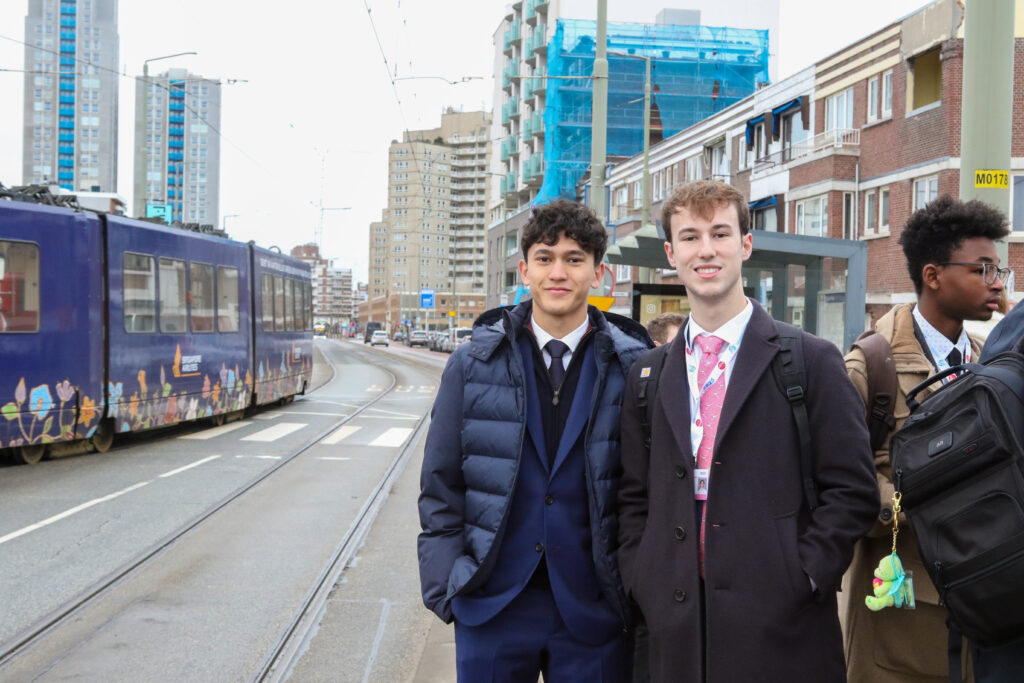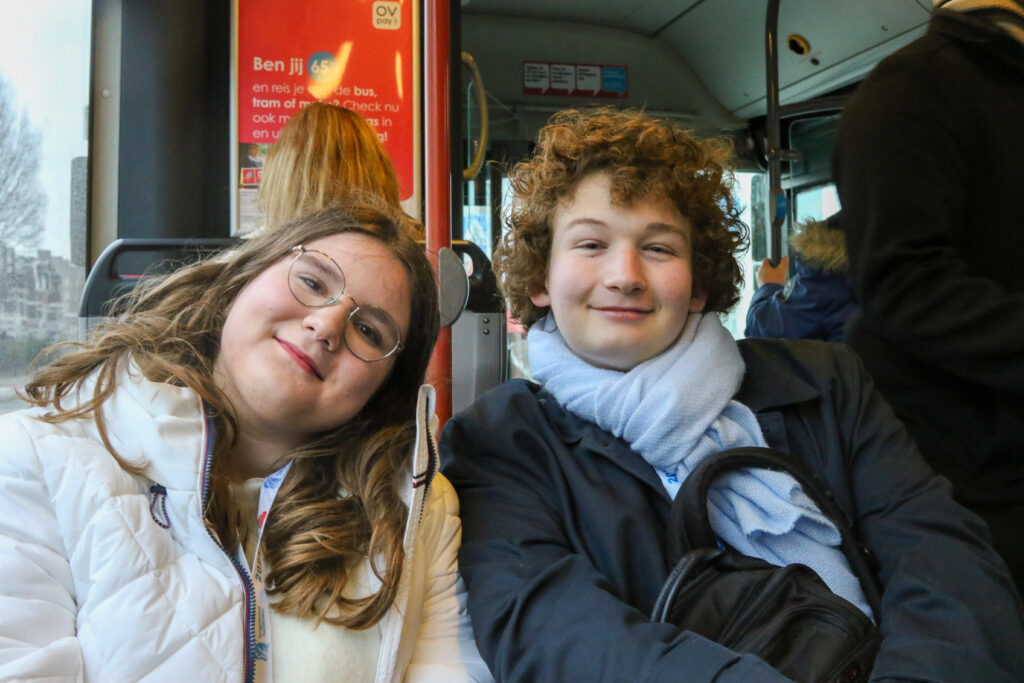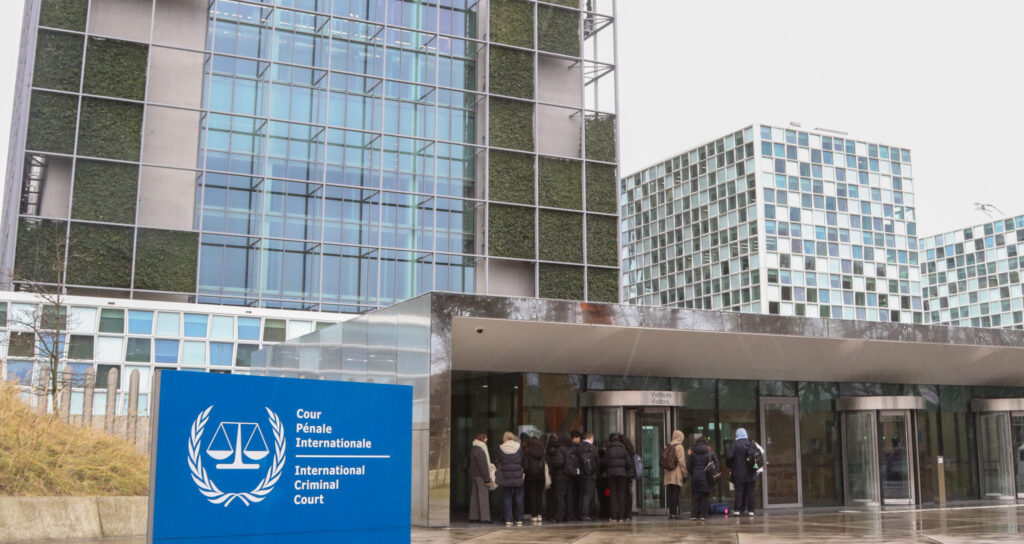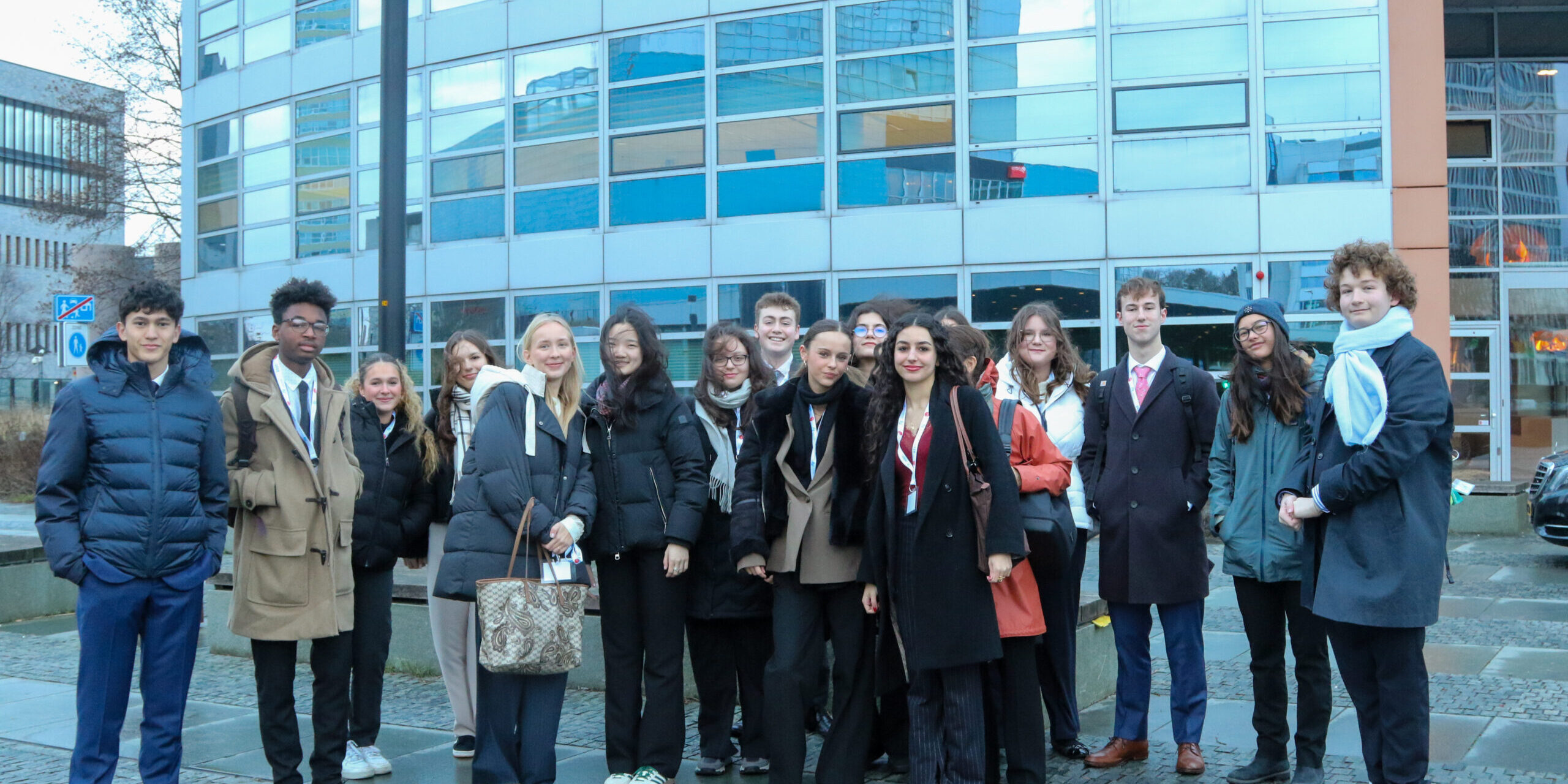An Arduous Journey to the ICC
By Jina Song
Photography by Lilly Tourville
Step one: get ignored by a dozen trams. Step two: trudge in the rain. Step three: walk some more. Lastly, step four: push through airport-style security gates. Shivering and wet-haired, yet warmed by closer bonds, the International Criminal Court (ICC) Committee finally entered the The Hague ICC building. THIMUN members were initially worried about “being in the same room as international criminals.” However, the ICC building seemed friendlier than many expected, featuring checkered windows, a central garden, and lush ivy walls. Committee members found a long-awaited haven in the ICC’s warmth.

A Peek into ICC Members
After undergoing a “competitive application process,” the THIMUN ICC committee is home to many passionate international students. Defne Vural from Turkey explains that “my interest in studying law later . . . makes me really excited to learn about the history of the ICC and the places where all these cases that we’ve been part of exist.”
Victoria Harding, a returning member of THIMUN, explains that “knowing a lot about the Darfur case through living in Sudan . . . played a really big part in why I applied.” Similarly, Aristides stated, “I really loved the experience last year, and that motivated me to come back.”
The committee was fortunate to attend a special program typically reserved for college students: a visit to the general hearing room and a presentation by Joseph Kukulu, an interpreter who has served at the ICC for 18 years. After an introduction to the history, function, and incidents behind the ICC, Kukulu delved into ways for students to take action. He emphasized that the ICC experience doesn’t end with a visit; instead, it can empower change and inspire futures.

Beyond the ICC
So . . . how exactly can we do to help?
According to Kukulu, you can take action through social media, a platform in which teens are “practically experts.” Social media can be a powerful platform to raise public awareness. Additionally, donations to the ICC trust fund can be a way to help victims from low socioeconomic backgrounds receive legal representation. Moreover, interning or potentially working at international legal bodies like the ICC can ensure global justice can thrive.

Back into the THIMUN ICC
“It’s really nice to see the actual place where you know we’re trying to simulate it and then go in and see the actual place,” said John Henry Edwards, an ICC advocate.
ICC Chair Zeya Bespolka noted stark differences between the real and model ICC. “The judges gain more context on how this process works in real life . . . they told us about a case spanning over 10 years, and we do this in 2 days,” Zeya said, “We’re doing an optimized version of the ICC trials.” After all, MUN should model our hopes for the future; a future where justice is upheld for all. Inspired by the visit, Zeya is considering interning at the ICC during her gap year. Throughout the remaining days of the THIMUN ICC sessions or even across life, the ICC visit stands as a cornerstone of the committee’s THIMUN experience.








